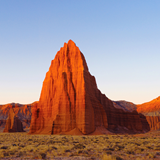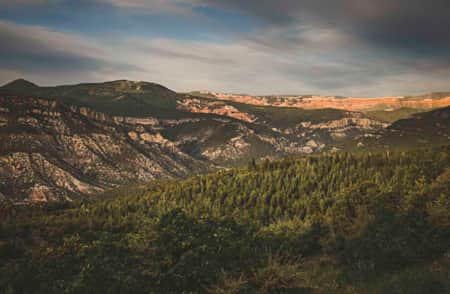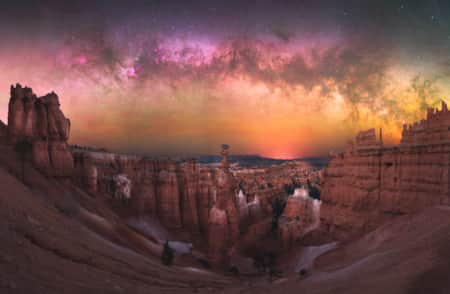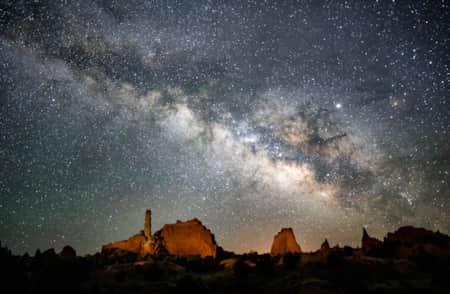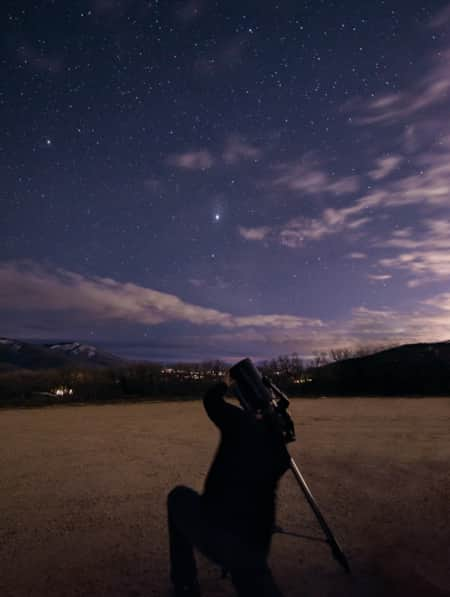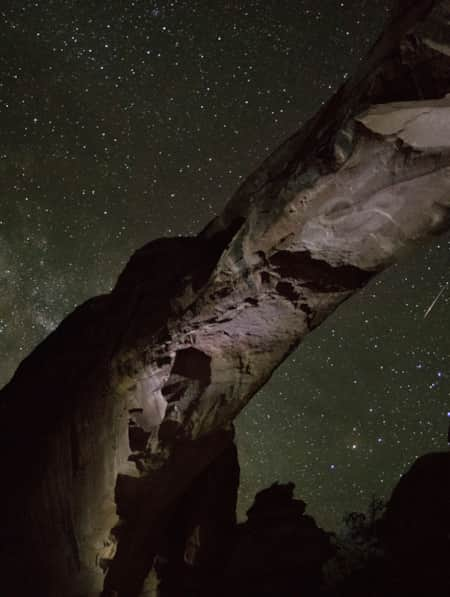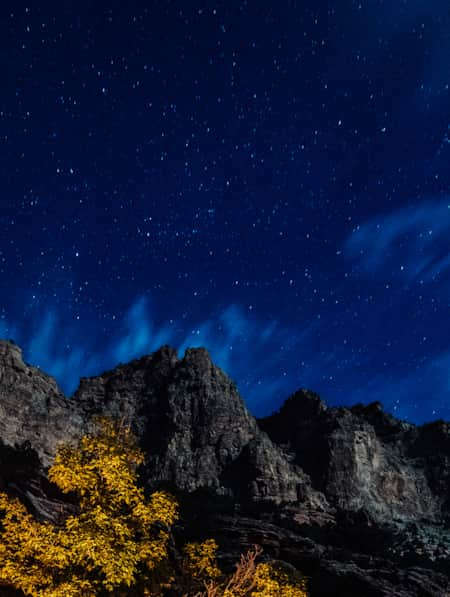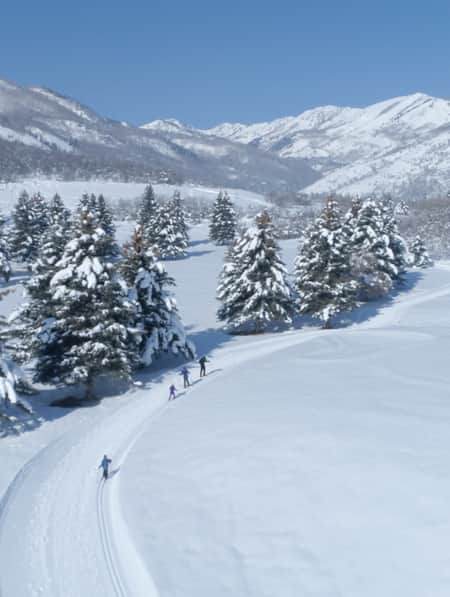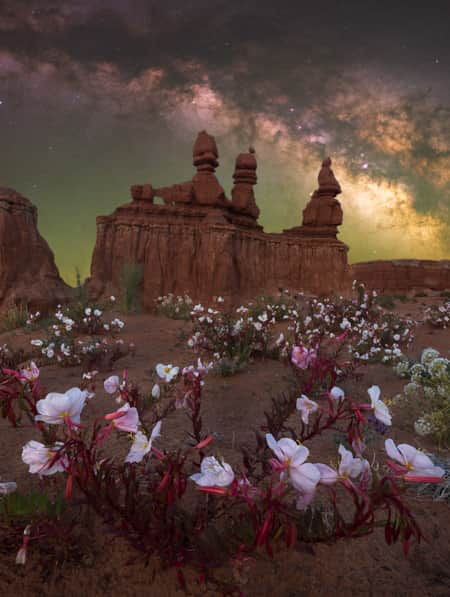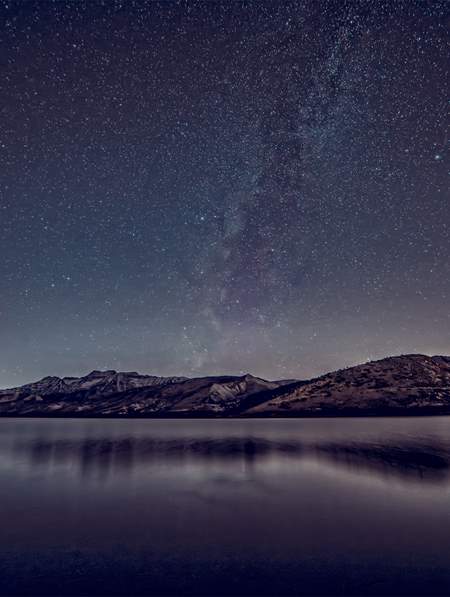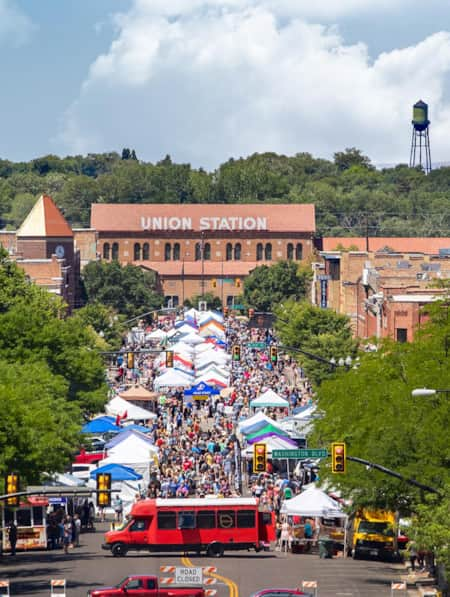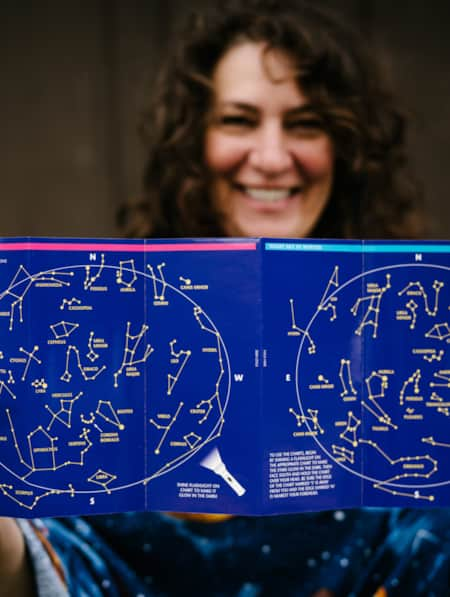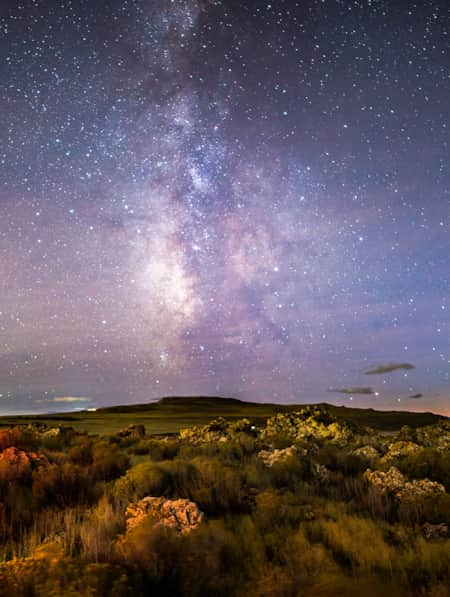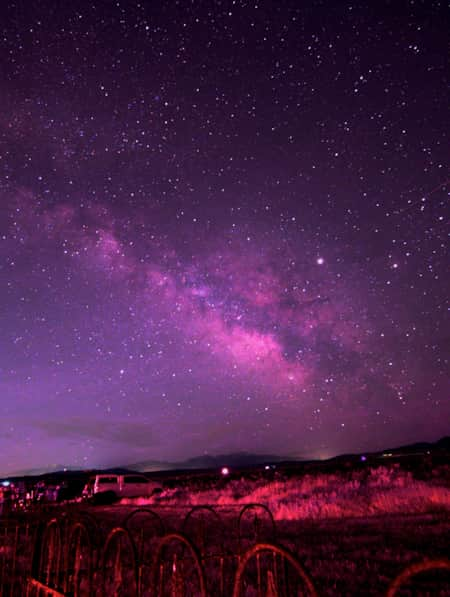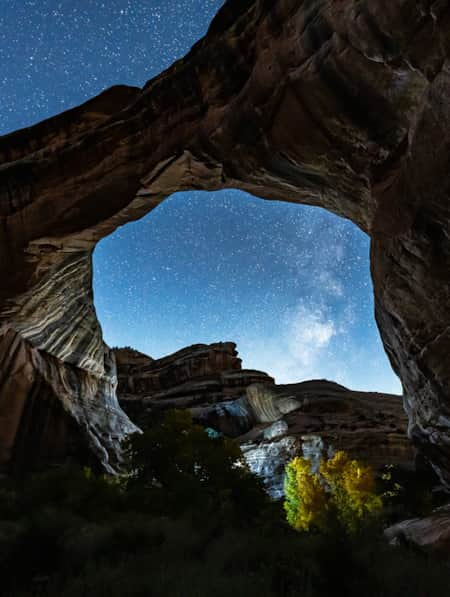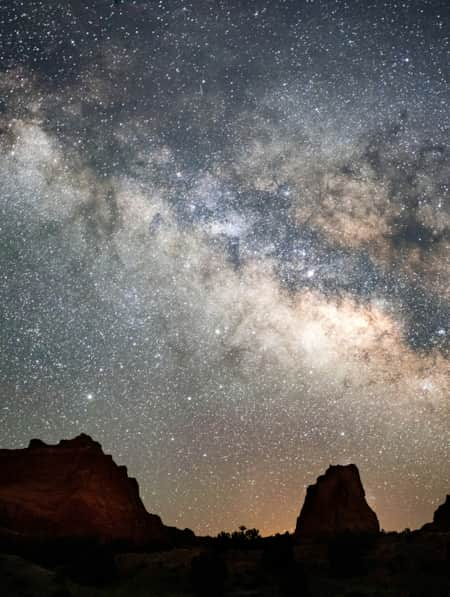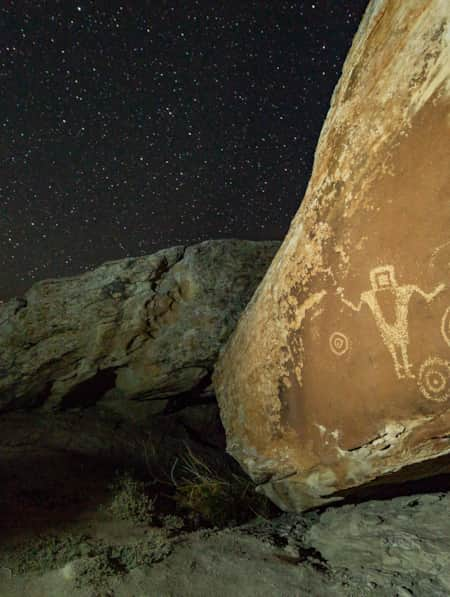A Party of Astronomic Proportions
Cedar Breaks National Monument hosts weekly star parties throughout the summer.
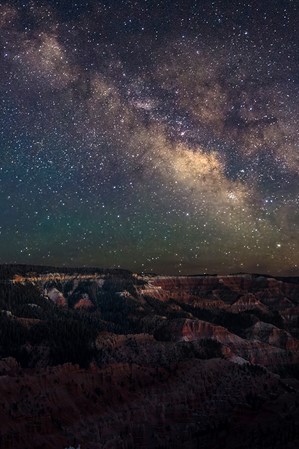
“Dark Ranger” Dave Sorenson points a laser beam into space.
No, Dark Ranger Dave is not a Sith Lord — even though the park ranger’s nickname might conjure Star Wars imagery. And no, he doesn’t have a real-life lightsaber; it’s a high-powered pointer he uses as an instructor to point out constellations at star parties in Cedar Breaks National Monument.
Every Saturday from May through Labor Day weekend, weather dependent, crowds ranging from 100 to 500 people gather at Cedar Break’s main overlook, Point Supreme, to gaze up at the region’s amazing dark skies and explore the stars and the planets that make up the solar system.
"The skies are so dark [above Cedar Breaks] because we are located at more than 10,000 feet above sea level..."
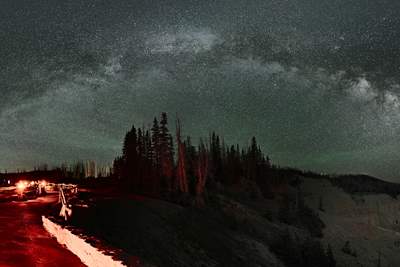
The ideal viewing conditions make Cedar Breaks one of the best places for stargazing in Utah. “It’s absolutely amazing here. The skies are so dark because we are located at more than 10,000 feet above sea level, and we’re far away from any light pollution,” Sorenson says. “There are so many things you can see up here that you can’t see down in Cedar City or in any metropolitan area.”
The program starts at approximately 9 p.m., with Sorenson, who has hosted the weekly event for the past three years, at the helm. At most star parties you’ll start by watching the closest star, our sun, set behind the western hills. Then the more distant stars begin to show up across the dark sky and the star-studded gazing starts. (Read: Utah After Dark)
You can utilize the park’s three telescopes to view planets and other objects within the solar system, such as Saturn, Jupiter and Mars — all easily spotted this summer. Depending on its cycle, the moon may be a topic of discussion as well. Sorenson usually starts his tour around the constellations around 10 p.m. Come and see for yourself why this is one of the best places for stargazing in Utah.
Myth, Awe and Astronomy
Along with the group, you can gaze up at the stars and find the Big Dipper, which is part of Ursa Major, known as the big bear of the sky. Once you spot these in the sky, you can’t help but smile. Learning about the mythology behind each constellation is fascinating and Sorenson does a great job of explaining it.
In the middle of the summer, the big bear of the sky is high overhead, so it was thought that the bear is being hunted as it walks the earth. As the leaves on the trees change and winter approaches, Ursa Major moves closer to the horizon line, where it has fallen. The hunt is over and the bear is dead throughout the winter. As spring returns, the bear rises and signifies a new hunting season.
Indeed, there are myriad myths that Sorenson touches upon based on time and the interest level of the crowd. The stories can’t help but grab your attention. Sorenson also discusses how seafarers of the Olde World used the stars to navigate the globe, and the importance of the North Star. This is followed by a question and answer session. The star party usually goes into the late hours of the evening, ending around 11:30 p.m.
If you can’t make a Saturday star party, there’s no need to fear, because the stars will always be viewable at Cedar Breaks. Sorenson recommends heading to Spectre Point, Rampants Overlook, or even the observation meadow by the park campground for some of the best panoramic views of the stars you’ll find anywhere in the country. While you might not have a high-powered telescope or an expert to guide you through the night’s sky, there are plenty of books and even smartphone apps to gain knowledge and respect for the galaxy while stargazing in Utah.
Of the many parties held throughout the summer, the August viewing of the Perseids Meteor Shower is a must-see, Sorenson says. Parties are also held during special astronomical events, such as lunar eclipses. Down the way at Brian Head Resort, Sorenson welcomes visitors and their kids to family-friendly wintertime star parties, held from from January through March. So if Utah’s snow beckons you, don’t miss out on the white(ish) stuff up above.
"At most star parties you’ll start by watching the closest star, our sun, set behind the western hills. Then the more distant stars begin to show up across the dark sky and the star-studded gazing starts."
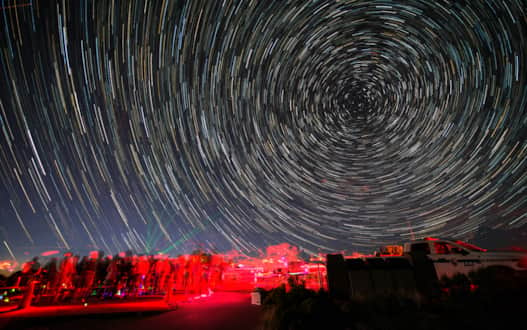
Other National Park Service sites also offer star parties — pictured here is Canyonlands National Park.
Photo: NPS
A Favorite Star is Born
During your attendance at a party in some of the best places for stargazing, you might just find your favorite star, like Sorenson.
“I love M13, found in the constellation Hercules. I really like it because of the blue and purple-ish colors. It’s one of the brighter and larger deep-space objects in the sky, and it’s right overhead during the summer.”
What will your favorite star be?
Check with the National Park Service for more information about Cedar Breaks National Monument and the weekly star parties. Admission to the parties is free with entrance into the monument. If you’re in the Cedar Breaks area, don’t skip out on the chance to see one of the most amazing attractions in the state! You can play at the park during the day, then travel to the star party location when the sun starts to set. Looking for other stargazing getaways? Check out Natural Bridges National Monument, the world’s first “Dark Sky Park,” another ideal spot for viewing the night sky.
Learn what to pack and how to view dark skies.
See a full list of Utah's IDA-accredited Dark Sky Parks and Communities or for a more detailed list of stargazing locations, read: Where to See the Milky Way this Year.
-

Cedar Canyon S.R. 14
Cedar Canyon and State Route 14 are the gateway to a high alpine playground. Prepare for a day or load up with gear and spend a week exploring.
-

Dark Skies of Bryce Canyon
Utah has several certified Dark Sky Parks, with Bryce Canyon being Utah's fourth national park, and 13th location altogether, to receive dark sky certification from the International Dark-Sky Association.
-

Dark Sky Parks
Head to one of Utah’s many Certified International Dark Sky Parks for the best celestial views on earth. You can find a dark sky experience that fits every itinerary.
